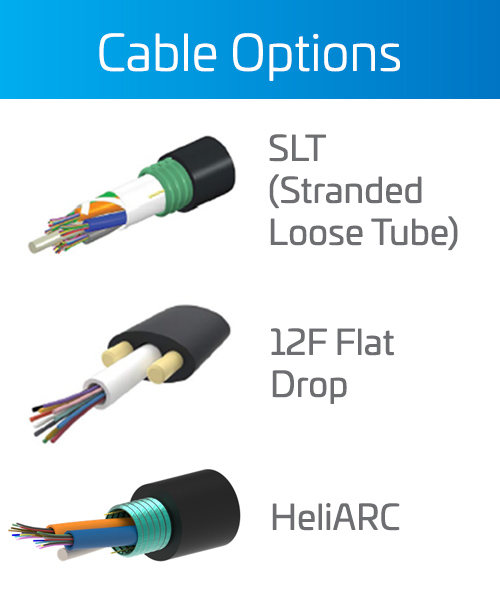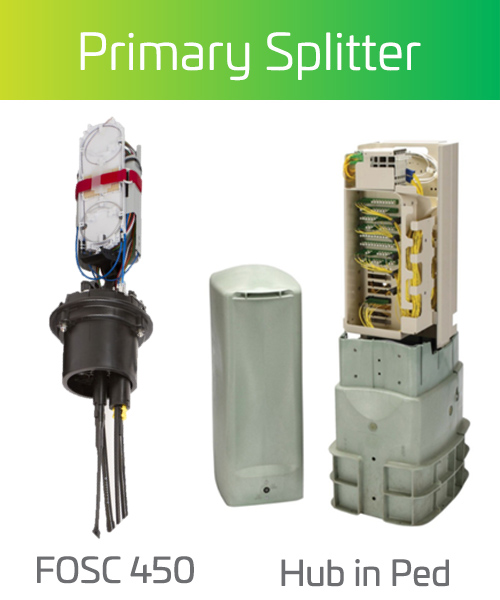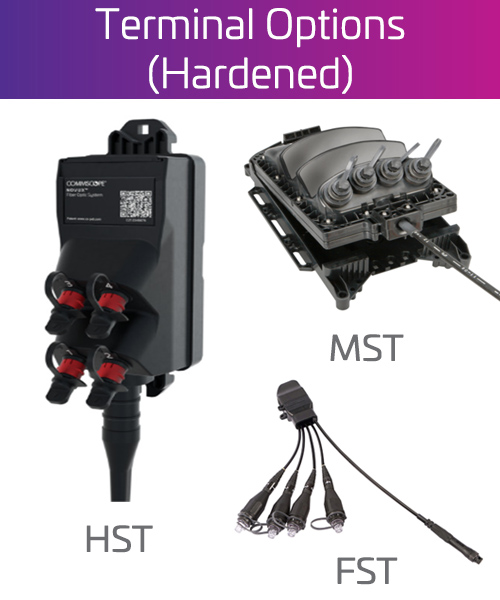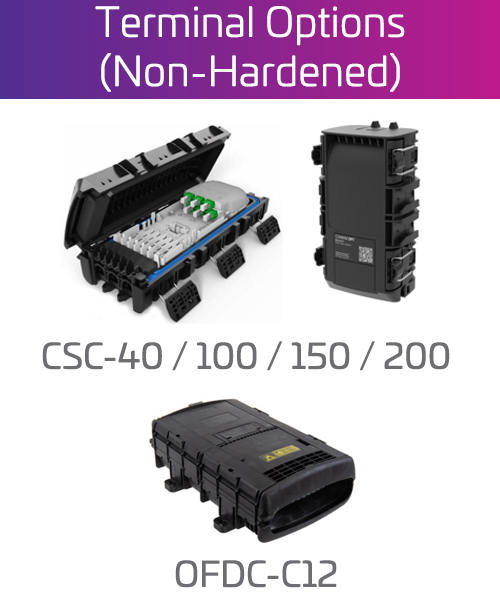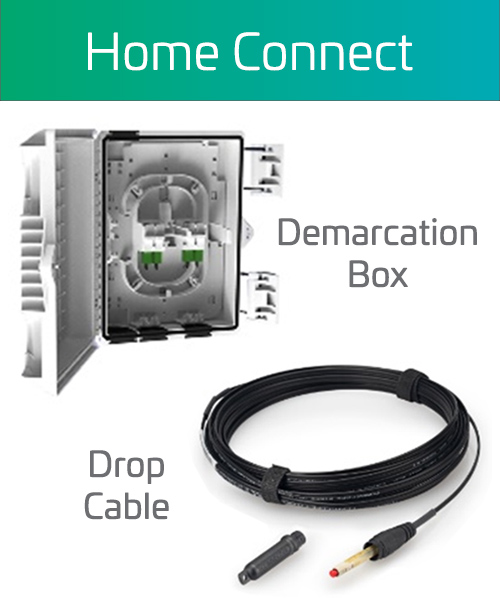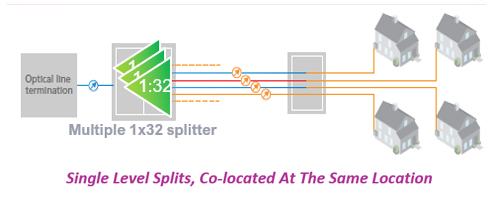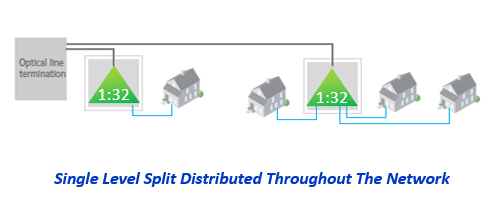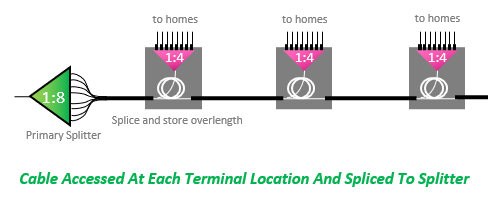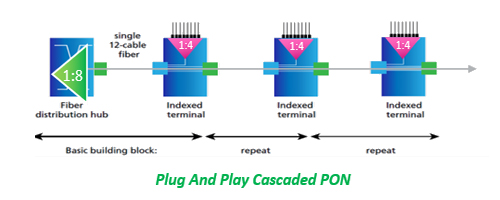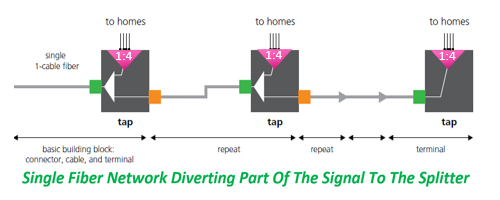Cascaded - Star Architecture
Multi-level splitter architectures, known as ‘Cascaded splitting,’ provide a very lean optical fiber infrastructure ideally suited to higher-density residential areas and can greatly reduce cost within the access network.
A primary splitter--typically a 1x8 or 1x4--would be positioned centrally within a group of 32 or 64 customers with each of the 8 or 4 outputs from the primary splitter feeding a secondary splitter (1x8 or 1x4) located at the service terminal. The service terminal, which is typically pre-terminated would radiate out from the primary splitter location--hence the name “Cascaded Star”.
Cascaded splitting can drive major efficiencies within a network build by reducing the quantity of fiber required by a factor of 4 or 8 when compared to a centralized optical fiber network.
Pros
- Reduced Fiber Counts - Reduced Splicing
- Smaller Cable Sizes
- Consolidated Splicing Locations
- Reduced Permitting Requirements (no cabinet)
Cons
- Duplicated Cable Install of Terminal Tails
- No Point-to-Point Provision to the Terminal
- Requires Specific Tail Lengths for Terminals


